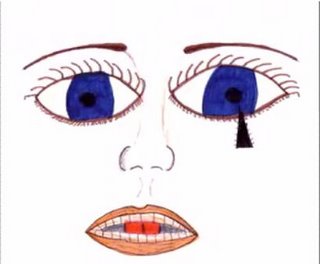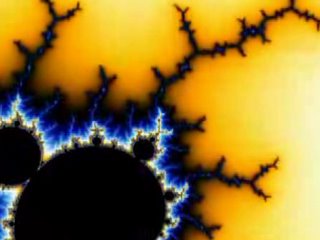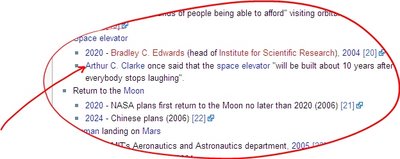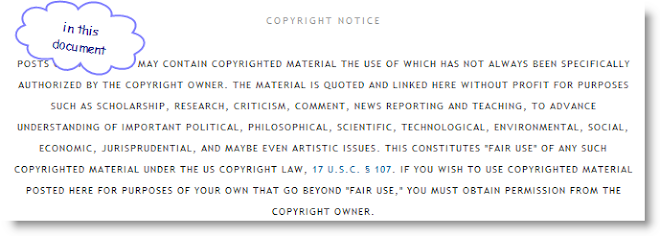Thursday, November 09, 2006
Saturday, October 21, 2006
Monday, October 16, 2006
Saturday, September 09, 2006
Gene Called Link Between Life Span and Cancers - New York Times
Gene Called Link Between Life Span and Cancers - New York Times:
"Biologists have uncovered a deep link between life span and cancer in the form of a gene that switches off stem cells as a person ages.
The critical gene, well known for its role in suppressing tumors, seems to mediate a profound balance between life and death. It weighs the generation of new replacement cells, required for continued life, against the risk of death from cancer, which is the inevitable outcome of letting cells divide.
To offset the increasing risk of cancer as a person ages, the gene gradually reduces the ability of stem cells to proliferate."
"Biologists have uncovered a deep link between life span and cancer in the form of a gene that switches off stem cells as a person ages.
The critical gene, well known for its role in suppressing tumors, seems to mediate a profound balance between life and death. It weighs the generation of new replacement cells, required for continued life, against the risk of death from cancer, which is the inevitable outcome of letting cells divide.
To offset the increasing risk of cancer as a person ages, the gene gradually reduces the ability of stem cells to proliferate."
Monday, September 04, 2006
Space Elevator Competition
The Observer World Nasa hopes to catch an elevator to space:
courtesy the eye
In a few weeks, scientists from across the world will gather in the New Mexico desert to compete for one of the strangest - and most ambitious - technological competitions ever devised.
Some researchers will unveil robots, powered by solar panels, that will climb long lengths of cable. Others will demonstrate materials so light and strong that mile-long stretches of the stuff could be hung in the air without snapping. And some will highlight their plans to launch satellites carrying sets of mini-probes tethered together, to discover how they behave in space.
All these different projects are united by one extraordinary goal: to build a stairway to heaven.
courtesy the eye
In a few weeks, scientists from across the world will gather in the New Mexico desert to compete for one of the strangest - and most ambitious - technological competitions ever devised.
Some researchers will unveil robots, powered by solar panels, that will climb long lengths of cable. Others will demonstrate materials so light and strong that mile-long stretches of the stuff could be hung in the air without snapping. And some will highlight their plans to launch satellites carrying sets of mini-probes tethered together, to discover how they behave in space.
All these different projects are united by one extraordinary goal: to build a stairway to heaven.
Sunday, September 03, 2006
Methuselah Mouse Prize - Wikipedia, the free encyclopedia
Methuselah Mouse Prize - Wikipedia, the free encyclopedia
The Methuselah Mouse Prize or Mprize is a growing $3.5 million prize started in 2003 to accelerate research into slowing and eventually reversing cellular aging and breakdown in humans. The Methuselah Foundation awards prizes to researchers who extend the lifespan of a mouse to unprecedented lengths.
The Methuselah Mouse Prize or Mprize is a growing $3.5 million prize started in 2003 to accelerate research into slowing and eventually reversing cellular aging and breakdown in humans. The Methuselah Foundation awards prizes to researchers who extend the lifespan of a mouse to unprecedented lengths.
Timeline of the future in forecasts - Wikipedia, the free encyclopedia
Timeline of the future in forecasts - Wikipedia, the free encyclopedia
Below is a comprehensive list of major future events, including technological inventions and scientific advances, that were repeatedly predicted by various authors, but that have not yet come into being. The list is centered not around the authors, but around specific events. In most cases alternative time estimates offered by other authors are provided. Since the futurist authors come from very different backgrounds (academic research, science fiction writing, politics, philosophy), the accuracy, realism and relevancy of their forecasts vary. The qualifications and bias of different authors are explained.
Timeline of the future in forecasts is a list by future chronology of various predictions. As prominent writers, social thinkers, politicians and scientists have all shared with the world their visions of the future, some of these individual predictions have been completely off the mark, while others have been rather accurate. However, taken together, they paint a picture of changing perceptions about various aspects of the future in our society and provide insight into aspirations and beliefs of their authors. Also, sometimes such predictions appear realistic enough to warrant a closer look at them.
Below is a comprehensive list of major future events, including technological inventions and scientific advances, that were repeatedly predicted by various authors, but that have not yet come into being. The list is centered not around the authors, but around specific events. In most cases alternative time estimates offered by other authors are provided. Since the futurist authors come from very different backgrounds (academic research, science fiction writing, politics, philosophy), the accuracy, realism and relevancy of their forecasts vary. The qualifications and bias of different authors are explained.
The Age of Spiritual Machines: Timeline
KurzweilAI.net:
The Age of Spiritual Machines: Timeline
by Raymond Kurzweil
A timeline by Ray Kurzweil from the birth of the universe through 2099.
The Age of Spiritual Machines: Timeline
by Raymond Kurzweil
A timeline by Ray Kurzweil from the birth of the universe through 2099.
Thursday, August 31, 2006
The Singularity - a good summary article
Reinventing Humanity: The Future of Machine–Human Intelligence
By Ray Kurzweil
We stand on the threshold of the most profoundand transformative event in the history of humanity,the “Singularity.”
What is the Singularity? From my perspective, theSingularity is a future period during which the paceof technological change will be so fast and far-reach-ing that human existence on this planet will beirreversibly altered. We will combine our brainpower—the knowledge, skills, and personality quirksthat make us human—with our computer power inorder to think, reason, communicate, and create inways we can scarcely even contemplate today.
This merger of man and machine, coupled with the sudden explosion in machine intelligence and rapid innovation in gene research and nanotechnology, will result in a world where there is no distinction betweenthe biological and the mechanical, or between physi-cal and virtual reality. These technological revolutionswill allow us to transcend our frail bodies with alltheir limitations. Illness, as we know it, will be eradi-cated. Through the use of nanotechnology, we will beable to manufacture almost any physical productupon demand, world hunger and poverty will besolved, and pollution will vanish. Human existence will undergo a quantum leap in evolution. We will beable to live as long as we choose. The coming into being of such a world is,in essence, the Singularity.
How is it possible that we could be so close to this enormous changeand not see it? The answer is the quickening nature of technological innovation. In thinking about the future, few people take into consideration the fact that human scientific progress is exponential: It expands by repeatedly multiplying by a con-stant (10 times 10 times 10, and soon) rather than linear (10 plus 10plus 10, and so on). I emphasize theexponential-versus-linear perspec-tive because it’s the most importantfailure that prognosticators make inconsidering future trends.
By Ray Kurzweil
We stand on the threshold of the most profoundand transformative event in the history of humanity,the “Singularity.”
What is the Singularity? From my perspective, theSingularity is a future period during which the paceof technological change will be so fast and far-reach-ing that human existence on this planet will beirreversibly altered. We will combine our brainpower—the knowledge, skills, and personality quirksthat make us human—with our computer power inorder to think, reason, communicate, and create inways we can scarcely even contemplate today.
This merger of man and machine, coupled with the sudden explosion in machine intelligence and rapid innovation in gene research and nanotechnology, will result in a world where there is no distinction betweenthe biological and the mechanical, or between physi-cal and virtual reality. These technological revolutionswill allow us to transcend our frail bodies with alltheir limitations. Illness, as we know it, will be eradi-cated. Through the use of nanotechnology, we will beable to manufacture almost any physical productupon demand, world hunger and poverty will besolved, and pollution will vanish. Human existence will undergo a quantum leap in evolution. We will beable to live as long as we choose. The coming into being of such a world is,in essence, the Singularity.
How is it possible that we could be so close to this enormous changeand not see it? The answer is the quickening nature of technological innovation. In thinking about the future, few people take into consideration the fact that human scientific progress is exponential: It expands by repeatedly multiplying by a con-stant (10 times 10 times 10, and soon) rather than linear (10 plus 10plus 10, and so on). I emphasize theexponential-versus-linear perspec-tive because it’s the most importantfailure that prognosticators make inconsidering future trends.
Tuesday, August 29, 2006
Axelrod on Cancer Cell Cooperation
via KurzweilAI
An analysis of how cells in a tumour cooperate has provided a unique insight into the evolution of cancer, and may lead to new treatments.
It makes use of "game theory" – the mix of mathematics and economics theory that has been invaluable in understanding how cooperation can evolve in animal societies, even when individuals are selfish.
Robert Axelrod, a political scientist at the University of Michigan in Ann Arbor, US, a leader in applying game theory to evolutionary biology, has now turned his attention to cancer.
Since every cancer cell within a tumour is different, with different mutations and needs, each of these cells can be thought of as a “player” in a game theory sense, Axelrod says.
Independently malignant
The “game” – to grow a successful tumour – proceeds more efficiently for all players if they cooperate, and this can occur without requiring the players to make conscious strategies.
“It’s well established that tumour cells grow by diffusing growth factors into the neighbouring tissue,” says Axelrod. Some cells lack the “full deck” of mutations necessary to produce all the growth factors, overcome host defences and become independently malignant.
But cells can aid each other by complementing the missing growth signals. A cell that promotes blood vessel growth to the tumour will also benefit other pre-cancerous cells.
“It’s Adam Smith’s old idea that if people cooperate it’s easier to get the job done,” Axelrod says, referring to the 18th-century philosopher. “Cooperation is thought of as a good thing, and cancer bad. It may be the reason why no one has thought of putting the two together.”
Diffusion chemicals
Recognising that tumour cells grow and recruit others through cooperation in this way has implications for understanding how cancer develops, and may lead to new approaches to therapy, Axelrod suggests
.
“For example, you could change the micro-environment of a tumour so that the diffusion chemicals don’t travel so far,” he says.
Laura-Jane Armstrong, at Cancer Research UK, says it is “very plausible” that different subtypes of cancer cells may cooperate to support each other's growth. “This could also explain some of the differences seen within cells from the same tumour, and even how tumours can acquire resistance to treatments.”
Axelrod and colleagues propose several methods to test the theory, and Armstrong says that if it is confirmed experimentally it could have major implications for how we treat cancer: “If there are sub-populations of different cancer cells within a single tumour, it could mean multiple drugs are needed to target all the different types of cell that contribute to the cancer.”
Journal reference: Proceedings of the National Academy of Sciences (vol 103, p 13474)
An analysis of how cells in a tumour cooperate has provided a unique insight into the evolution of cancer, and may lead to new treatments.
It makes use of "game theory" – the mix of mathematics and economics theory that has been invaluable in understanding how cooperation can evolve in animal societies, even when individuals are selfish.
Robert Axelrod, a political scientist at the University of Michigan in Ann Arbor, US, a leader in applying game theory to evolutionary biology, has now turned his attention to cancer.
Since every cancer cell within a tumour is different, with different mutations and needs, each of these cells can be thought of as a “player” in a game theory sense, Axelrod says.
Independently malignant
The “game” – to grow a successful tumour – proceeds more efficiently for all players if they cooperate, and this can occur without requiring the players to make conscious strategies.
“It’s well established that tumour cells grow by diffusing growth factors into the neighbouring tissue,” says Axelrod. Some cells lack the “full deck” of mutations necessary to produce all the growth factors, overcome host defences and become independently malignant.
But cells can aid each other by complementing the missing growth signals. A cell that promotes blood vessel growth to the tumour will also benefit other pre-cancerous cells.
“It’s Adam Smith’s old idea that if people cooperate it’s easier to get the job done,” Axelrod says, referring to the 18th-century philosopher. “Cooperation is thought of as a good thing, and cancer bad. It may be the reason why no one has thought of putting the two together.”
Diffusion chemicals
Recognising that tumour cells grow and recruit others through cooperation in this way has implications for understanding how cancer develops, and may lead to new approaches to therapy, Axelrod suggests
.
“For example, you could change the micro-environment of a tumour so that the diffusion chemicals don’t travel so far,” he says.
Laura-Jane Armstrong, at Cancer Research UK, says it is “very plausible” that different subtypes of cancer cells may cooperate to support each other's growth. “This could also explain some of the differences seen within cells from the same tumour, and even how tumours can acquire resistance to treatments.”
Axelrod and colleagues propose several methods to test the theory, and Armstrong says that if it is confirmed experimentally it could have major implications for how we treat cancer: “If there are sub-populations of different cancer cells within a single tumour, it could mean multiple drugs are needed to target all the different types of cell that contribute to the cancer.”
Journal reference: Proceedings of the National Academy of Sciences (vol 103, p 13474)
Subscribe to:
Posts (Atom)





